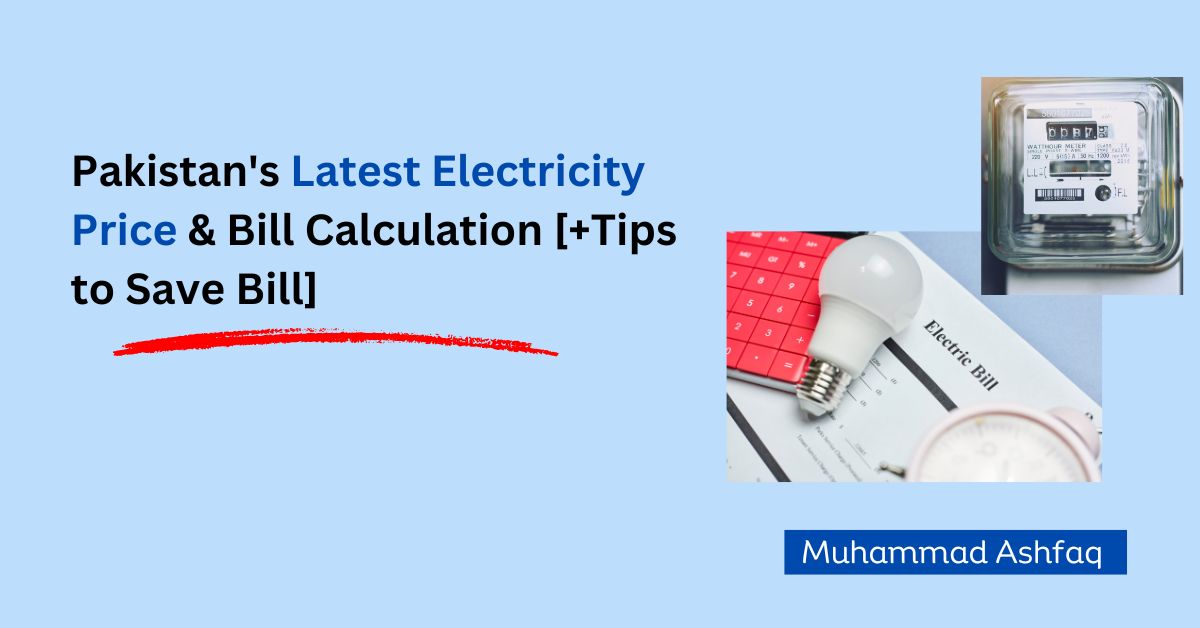Electricity Per Unit Price Today in Pakistan 2025 | Wapda Unit Rate
Under PM Shehbaz Sharif’s new tariff revision, the average electricity rate has dropped by Rs. 7.41, bringing it down to Rs. 37.64 per unit, compared to the earlier Rs. 45.05 in Pakistan.
But even with this cut, many people still don’t understand how their bill is calculated—or where the extra charges come from.
In this guide, I’ll break down the 2025 unit rates in Pakistan, category by category, and show you exactly how WAPDA companies calculate your final bill.
Find Trusted Solar Companies in Your City
No more guesswork! Compare expert-approved solar companies to safe-guard your investment.

Latest Electricity Bill Per Unit Price in Pakistan
The below table contains the latest unit price of different tariff categories formulated by NEPRA in April 2025.
| Category | Old Rate | New Rate |
|---|---|---|
| Up to 50 Units | 4.78 | 4.78 |
| 51–100 Units | 9.37 | 9.37 |
| 1–100 Units | 14.67 | 8.52 |
| 101–200 Units | 17.65 | 11.51 |
| Up to 300 Units | 41.26 | 34.03 |
| Above 300 Units | 55.70 | 48.46 |
| 3-Phase Domestic | 38.34 | 31.63 |
| Commercial | 71.06 | 62.47 |
| General Services | 56.66 | 49.48 |
| Industrial | 48.19 | 40.51 |
| Bulk Consumers | 55.05 | 47.87 |
| Agricultural | 41.76 | 34.58 |
| Azad Kashmir & Other Consumers | 39.68 | 32.69 |
| National Average Tariff | 45.05 | 37.64 |
This tariff applies to all discos in Pakistan, including IESCO, LESCO, Mepco, Fesco, and Pesco.
Let’s Understand Different Consumer Categories
To understand how the electricity 1 unit price in Pakistan is applied to the bill, first, we need to understand the different consumer categories.
Protected Consumer
Protected consumers are those whose electricity usage is below 200 units for the last six consecutive months. This means that as long as your monthly usage stays within this limit, you’ll be considered a protected consumer.
However, if your usage exceeds 200 units even for a single month, you’ll automatically be moved to the non-protected category.
Non-Protected Consumer
On the other hand, non-protected consumers are those whose electricity bill is above 200 units for the previous six months, either for all six months or for any single month during that period. This group is subjected to high tariffs.
Now you can see from the above tariff guide, how big the difference is between protected and unprotected categories.
Popular Read: Solar Air Conditioner in Pakistan – Fresh Rates 2025
How Electricity Bill is Calculated?
To calculate the overall bill first we need to understand what are the portions of the electricity bill. We will take this bill (IESCO consumer) as an example.
Now let’s look at each part one by one.
First, confirm the tariff category
To confirm which tariff will apply to our units we will find whether we fall in the protected or un-protected category.
For that look at the last 6 month history of this bill.
As the November, January, and February bill is above 200 it means we are in a non-protected category.
Calculate IESCO charges
First, to calculate the cost of electricity, the consumed units (176) are multiplied by the unit rate, which is Rs. 22.9 (see un-protected 200-300 units slab above).
The next major component is FPA (fuel price adjustment) which is given at the end (Feb-24 @ Rs. 4.92).
To calculate multiply 4.92 by the Feb units (292) which comes out to be Rs.1432.
FC surcharge (financing cost surcharge) is also included here which is revised by Nepra from time to time and the current rate is Rs. 3.2/unit.
Multiplying 3.2 with monthly units (176) results in Rs. 568.
The last portion of IESCO charges is a quarterly adjustment which is purely a distribution company charge and applies every 3 months. In this case, it is Rs. 608.
Total IESCO Charges = Rs. 6647
Calculate Govt. charges
Now it’s govt. turn to recover their dues. The top of the line is electricity duty which is 1.5% of the cost of electricity and equal to Rs.70.
Next is the TV fee which is Rs.35 (only applies to residential connections).
The major chunk here is the GST (general sales tax), which is 17% of the electricity cost and comes out to be Rs.951.
Finally electricity duty and GST is calculated over FPA price in the same way as above and sum up to Rs.282.
Total Govt. Charges = 1338
Calculate final bill
Total Bill = IESCO charges + Govt. Charges
Total Bill = 6647+1338
Total Bill = Rs. 7985
Note: You can see from the bill below that consumer arrears (the last 2 months’ bill is not paid) of Rs.18203 are also added to the final bill calculation.
Total Bill = Rs. 7985 + 18203
Total Bill = 26189
Apply This Simple Technique to Save Electricity Bill
With the new flat rate, the bills will be significantly higher. Be prepared for it.
One way we can use our common sense is to check our electricity usage every 10 days and ensure it stays under 200 units.
In this way, you will be in a protected category, and your bill will be 40% less than if you go to an unprotected category.
Factors Affecting Electricity Costs in Pakistan
Electricity prices in Pakistan are influenced by several key factors.
Let’s break them down:
High Dependence on Imported Fuels
Pakistan relies heavily on imported fuels like coal, oil, and LNG for electricity production.
Global price fluctuations significantly affect local rates.
Transmission and Distribution Losses
Aging infrastructure leads to significant losses in the transmission and distribution network, increasing the overall cost of electricity for consumers.
High Taxes and Surcharges
Electricity bills in Pakistan include various taxes, such as GST and FPA (Fuel Price Adjustment), which can make up 40-50% of the bill.
Circular Debt
Pakistan’s energy sector faces a circular debt issue, where unpaid dues between government entities lead to inefficiencies and increased costs.
By understanding these factors, consumers can better grasp why electricity costs in Pakistan are so high and how it impacts their monthly bills.
Wrapping Up
I hope this blog post has provided you with a clear overview of the current per-unit electricity rates in Pakistan and what you’re paying in your electricity bills
With this knowledge, you’ll be in a stronger position to monitor your electricity consumption, budget accordingly, and even possibly identify any discrepancies in your bills.
Frequently Asked Questions
In Pakistan, 1 unit of electricity is equivalent to 1 kilowatt-hour (kWh). It represents the amount of electricity consumed by using 1 kilowatt of power for 1 hour.
The electricity bill for 100 units in Pakistan is Rs 3,580.
The electricity bill for 200 units in Pakistan is Rs 7,100.
The electricity bill for 300 units in Pakistan is Rs 13,500.
The electricity bill for 400 units in Pakistan is Rs 21,700.
The electricity bill for 500 units in Pakistan is Rs 30,000.
The electricity bill for 600 units in Pakistan is Rs 39,400.
The electricity bill for 800 units in Pakistan is Rs 59,200.

Content Writer | Assistant Manager (Electrical) at IESCO
As a passionate content writer, I’m on a mission to make solar hassle-free for you through my expert guides and easy-to-digest content.

